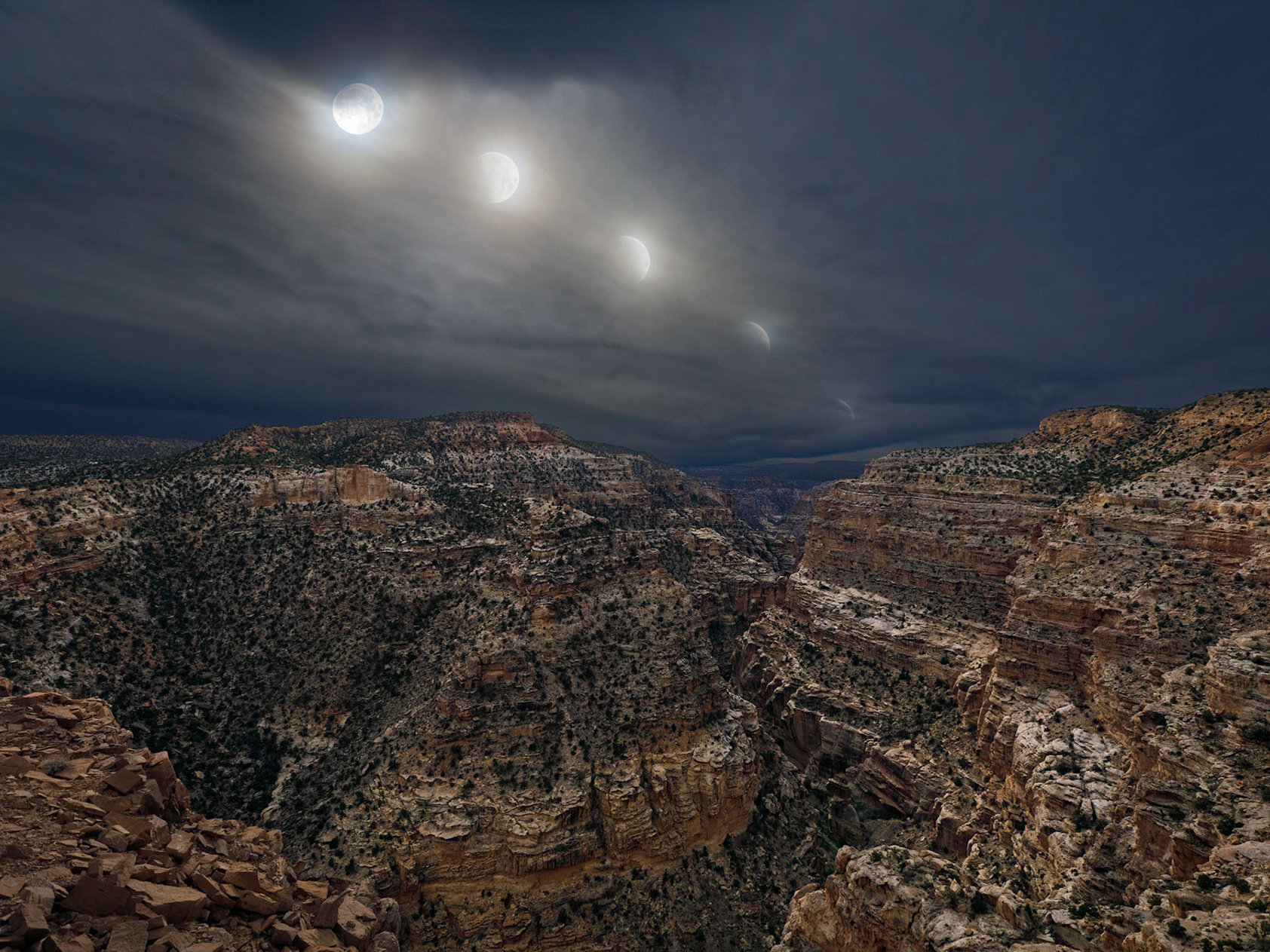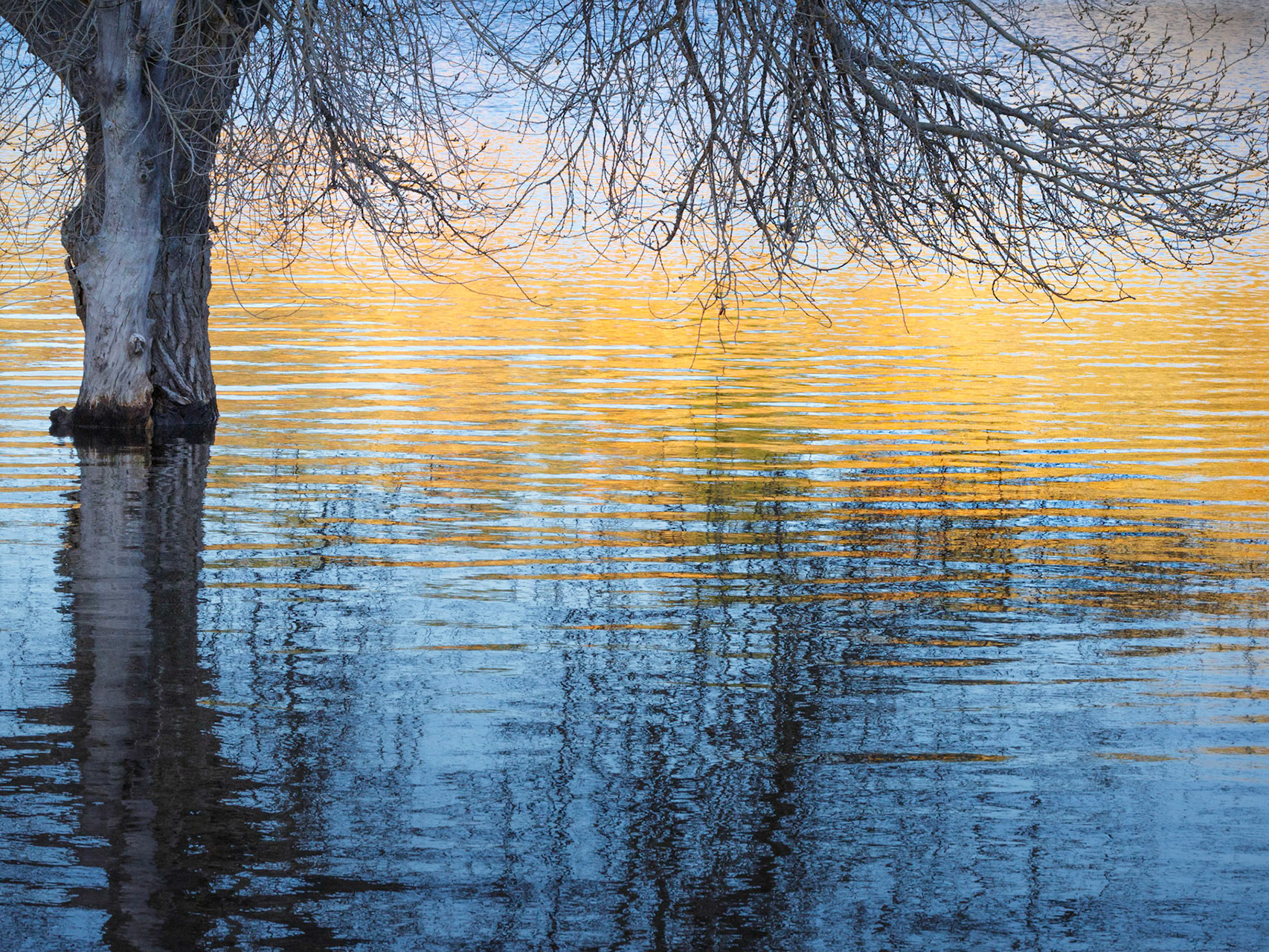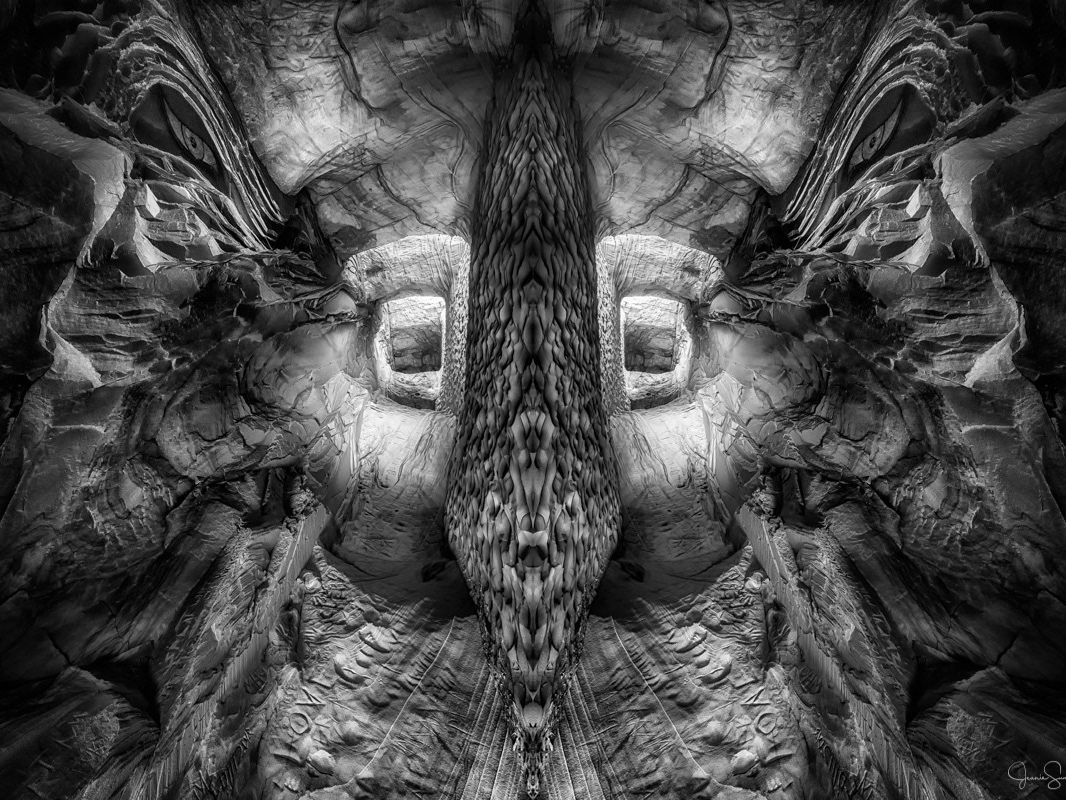Background
To be clear, I've been using my IR camera quite regularly on trips to the desert this spring, but I've been excited to try it on green vegetation. Summer is typically my least favorite season and my hope is that the IR camera will get me excited about photographing the summer landscape.
When a group from my local camera club met for a photo outing along Cherokee Park Road north of Livermore, CO, the first thing I did was look at the weather forecast to see if it would be sunny. Sure enough - lots of sun (and lots of wind) was predicted! It seemed like ideal conditions to play with my IR camera.
What I hadn't counted on were the puffy clouds that cast dancing shadows on the landscape. It's one of my favorite lighting conditions! I love watching a landscape change as different parts go in and out of shadow. And on this morning, they were moving so quickly that if I waited more than a couple seconds, the light would completely change and my photo would fall flat (literally). But it also meant that if I happened upon a scene that I thought held some promise, I just needed to wait a bit to see if it would come to life with different lighting.
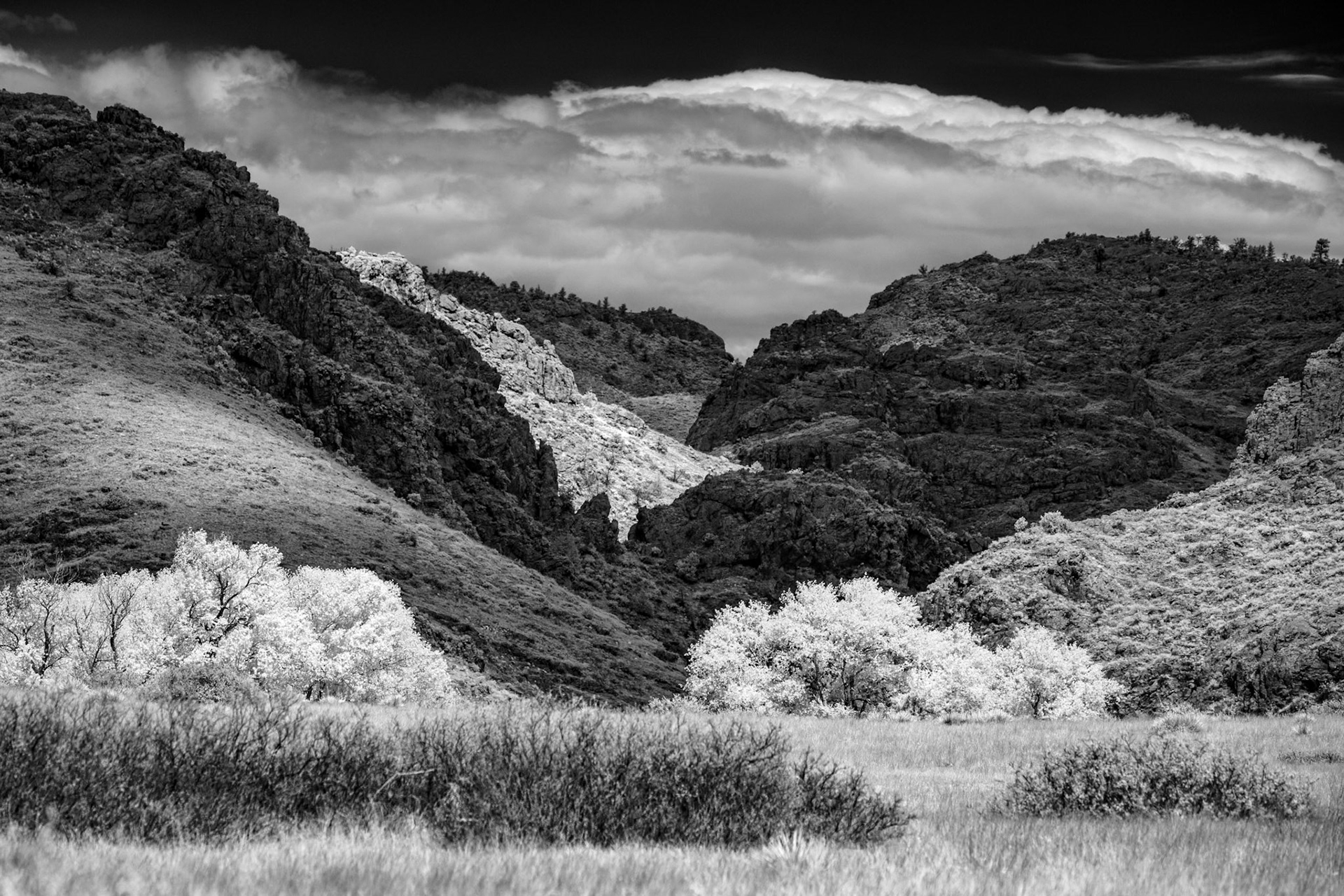
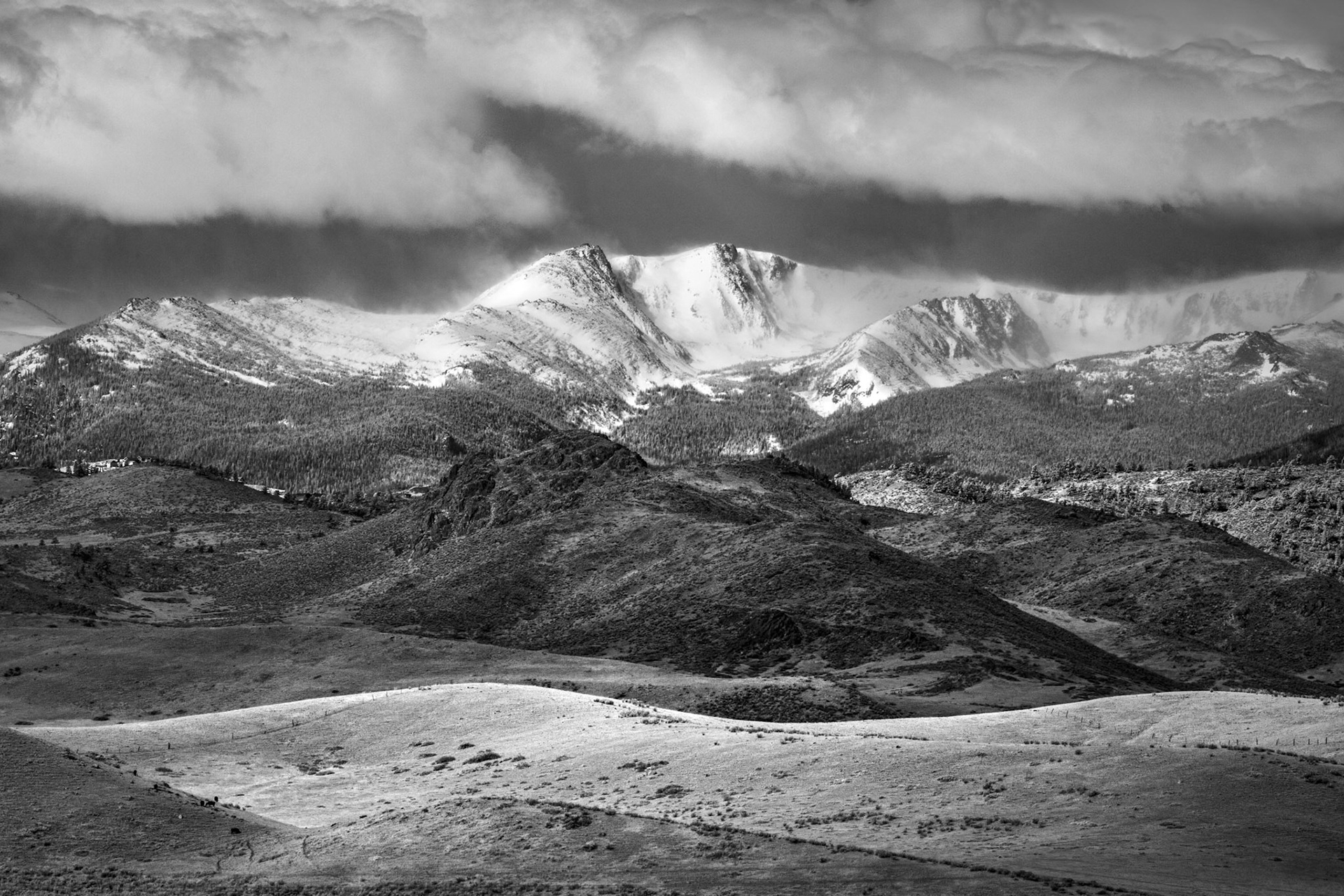

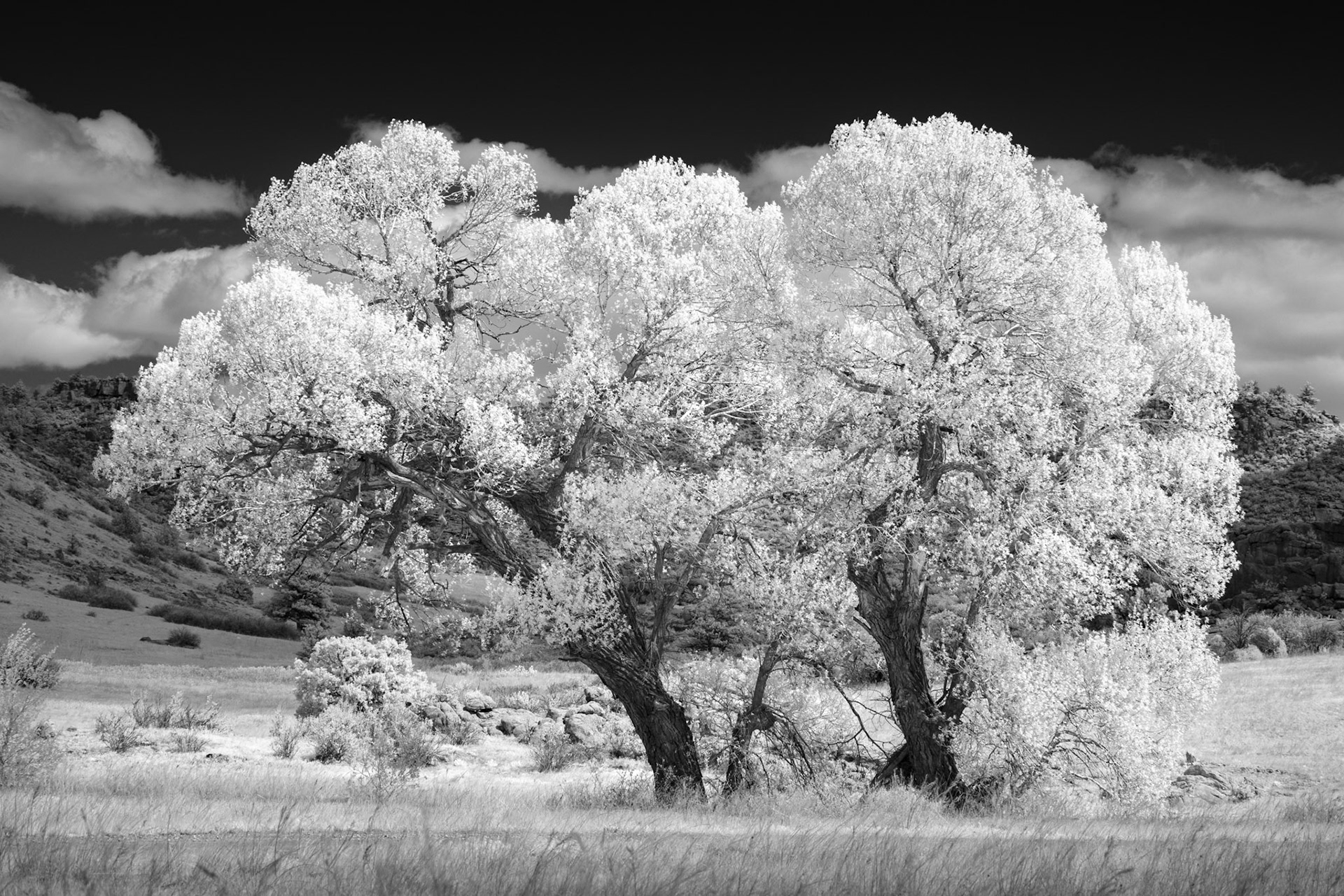

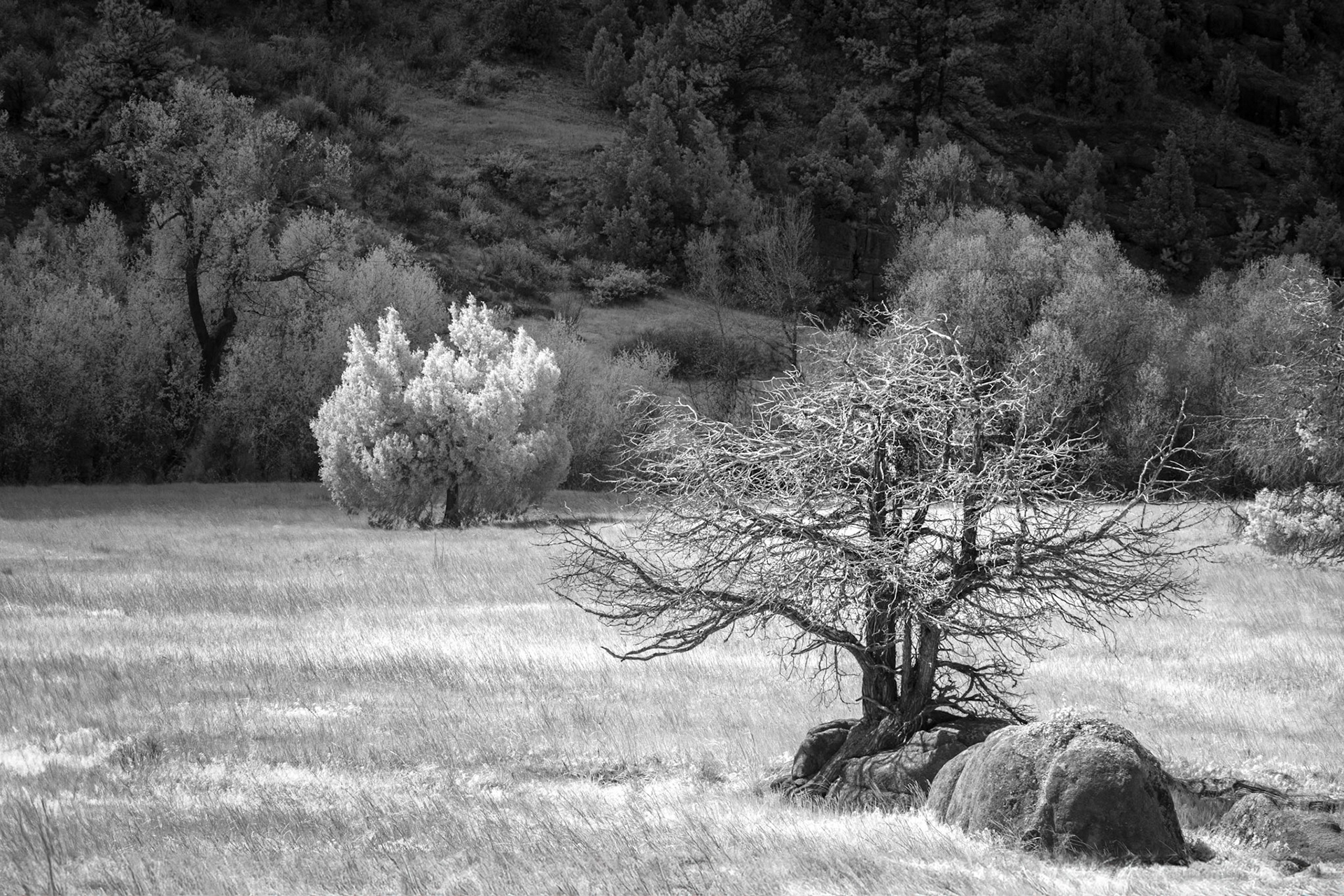

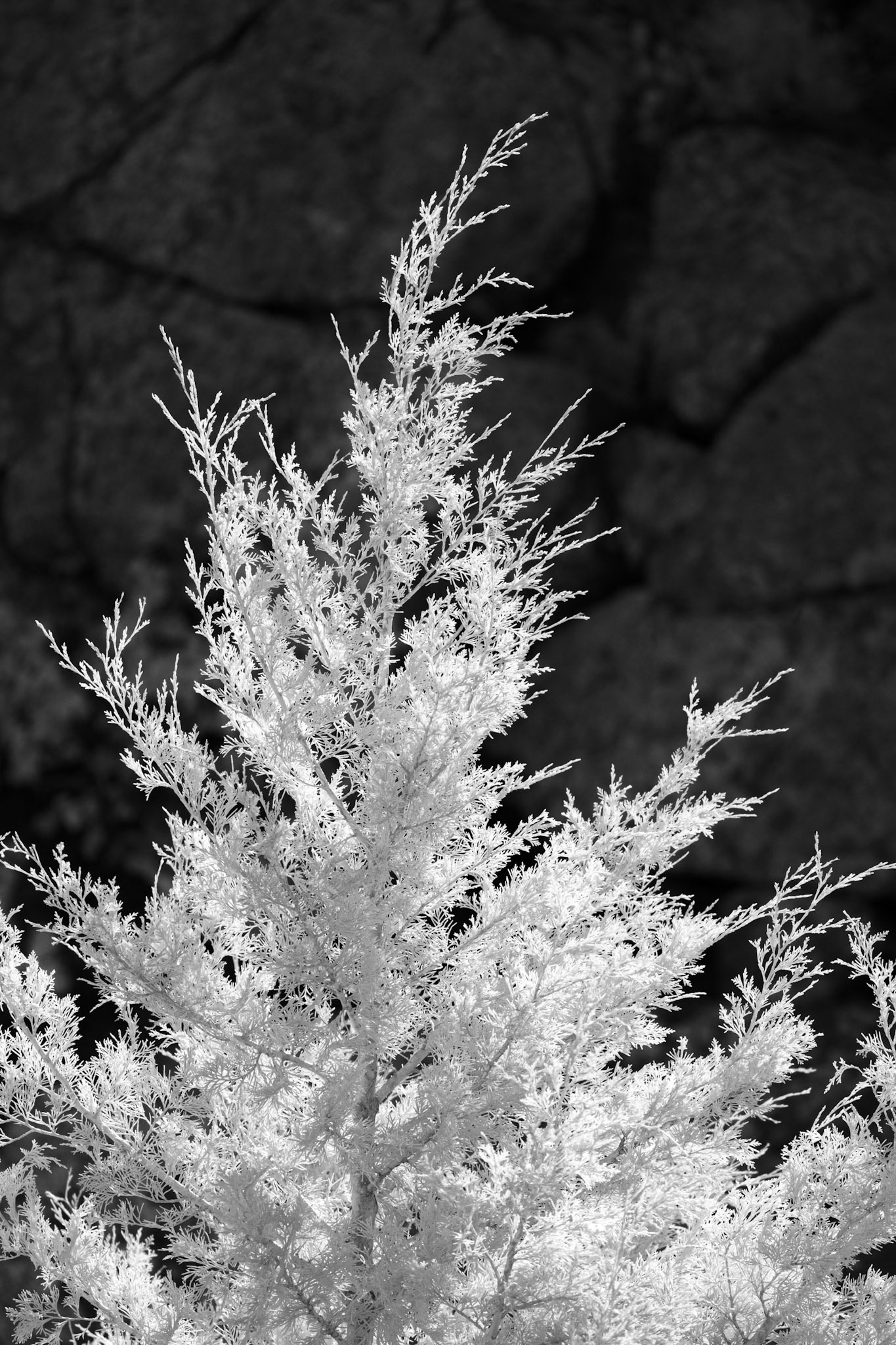
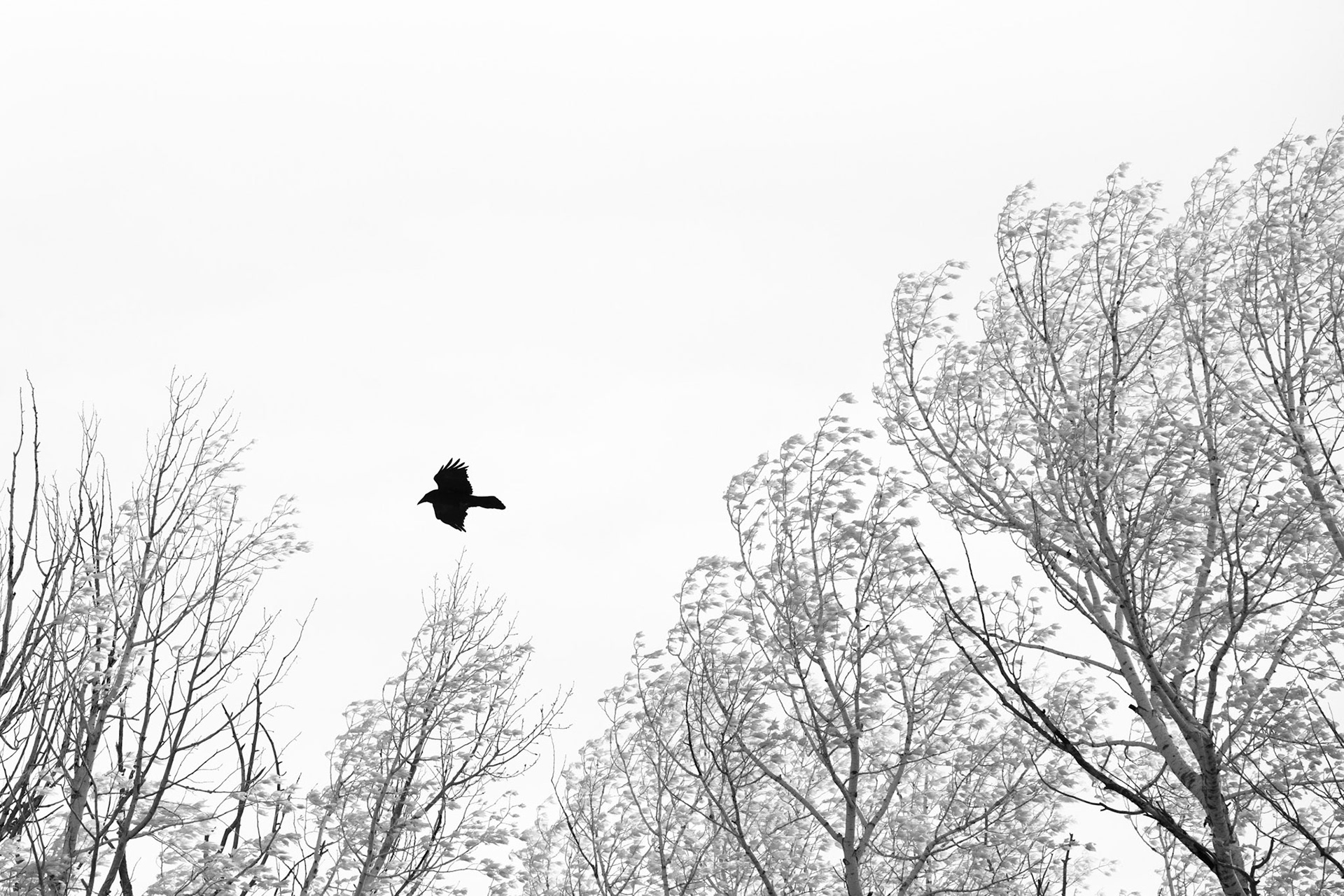
On the drive out, I found myself "chasing" a cloud shadow that seemed to be following the road. I realized that the distance between my car and the shadow was remaining constant, so I looked at my speedometer: 43 mph. That's how quickly the clouds were moving! And it explained why the lighting had been changing so quickly as I was taking photos. (So quickly in fact, that it was impossible to do focus stacks - even automated ones. The scene completely changed from when I pressed the shutter button to after the focus stack was complete.)
While the speed of the clouds meant I had to react quickly when the lighting enhanced the scene, it also meant that I had many opportunities to play with different lighting scenarios and how the IR camera captured them. This turned out to be very informative once I got back to my computer and could study the images I'd taken. I've included a few comparisons below. (Please note that these images are not fully processed. They all have the same global adjustments to increase contrast, but that's it.)
I found these two images of cottonwood trees to be particularly informative. I feel like the IR camera captures more contrast in sunny conditions than a normal camera does. I didn't actually test this by taking the same photo with my normal camera, but I might try a comparison in the future. In any case, the photo on the left was taken with almost everything in the shadow of a cloud. (You can see a few small patches of sunlight on the ground.) What I notice in this photo is that the sky is more of a midtone gray and the leaves of the trees get lost in the clouds behind it. There's good contrast in the overall photo, but there's not any separation between the trees and the background. In the photo on the right, the trees were in full sun while the background was in shade. The sky looks much darker and the leaves are much brighter than the clouds, so there is good separation between the trees and the background. I'm not entirely sure why the sky looks darker except that the brightness of the trees in full sunlight relative to the sky was much greater than in the photo where the trees were in shade. For me, this is where IR really shines.
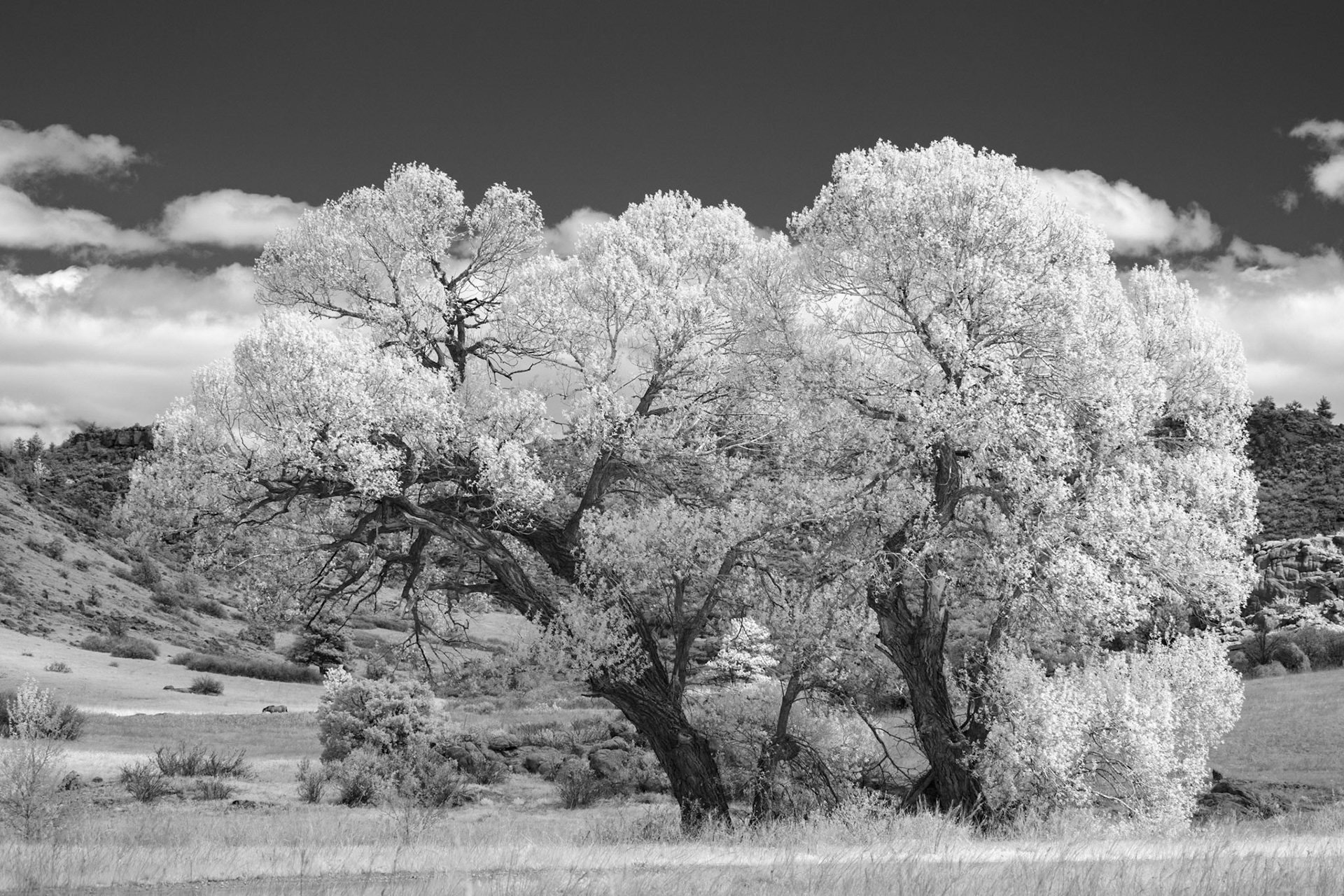
Scene in cloudy conditions
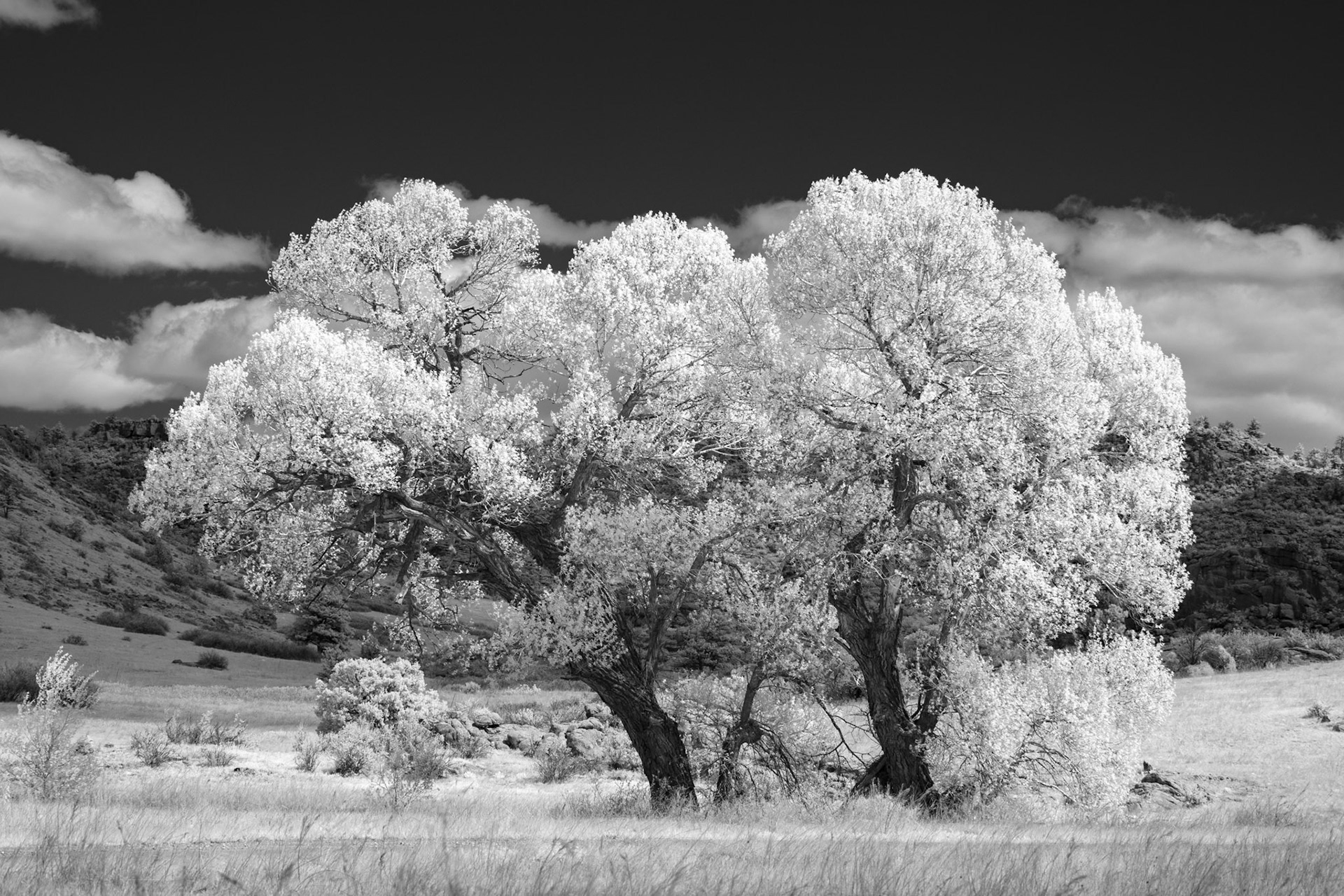
Same scene with sunlight spotlighting the trees
Of course, the same lack of depth happens when everything is in full sun and I can't say for sure that the IR camera produces more contrast in spotty lighting conditions than a normal camera does. take for example the following photos. The photo on the left has sunlight shining evenly on all three hills in the scene and there's no separation between them. This is to be expected for a landscape in full sun at 10:00 in the morning. I watched and waited as the light played across the landscape to finally come away with the photo on the right. I doubt that the difference between these two photos is due to IR, it is much more likely that the difference is entirely because of the different lighting on the landscape. (And it's one of the reasons I _love_ partly cloudy days!)
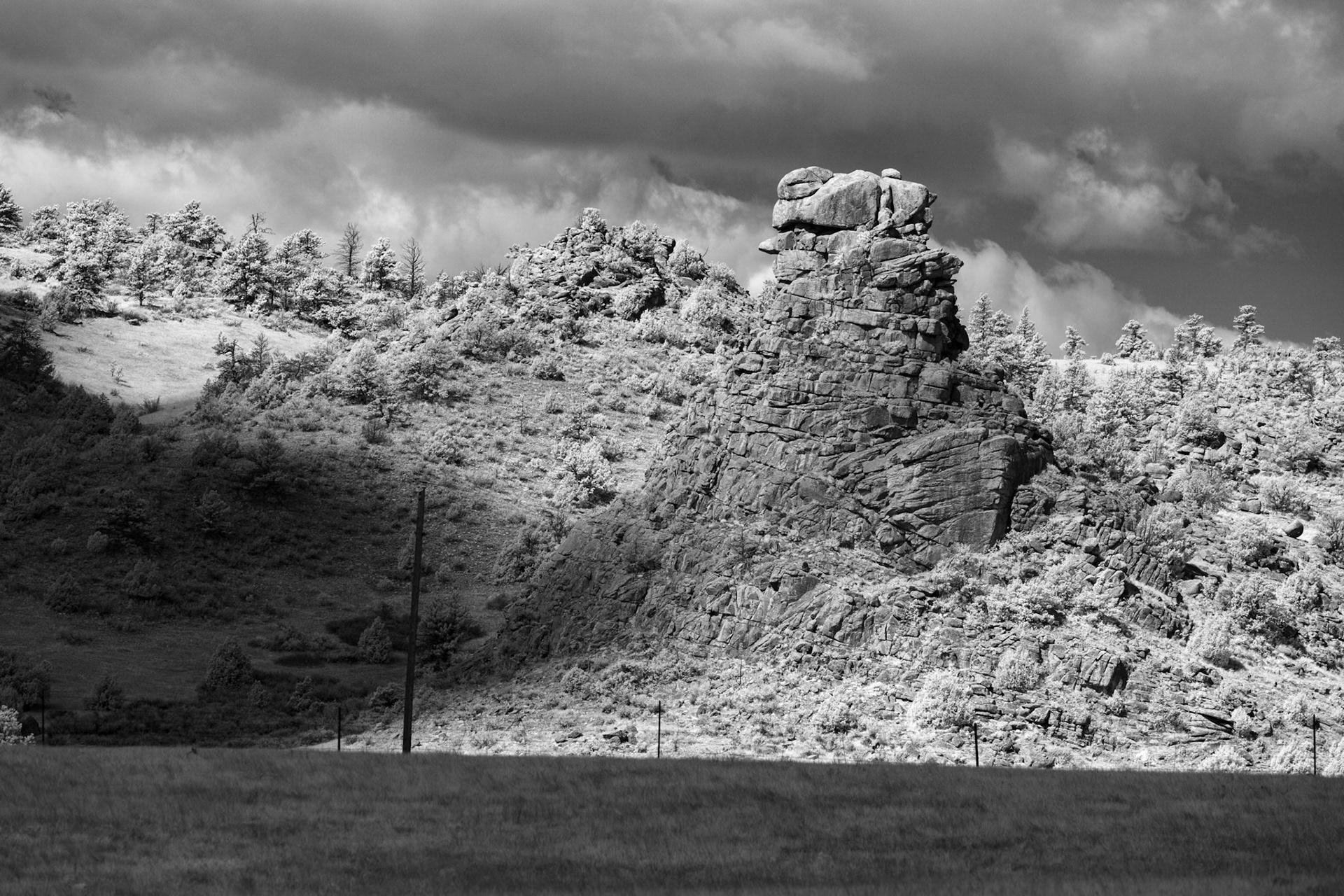
Full sun on all three hills




